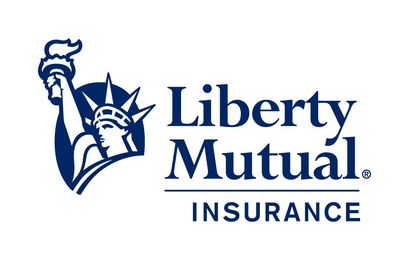
Slide title
Write your caption hereButton
Slide title
Write your caption hereButton
Slide title
Write your caption hereButton
Header Form
We will get back to you as soon as possible
Please try again later
Employee Benefits
Accidental Death & Dismemberment (AD&D)
In the event of a fatal accident or an accident that results in you losing your eyesight, speech, hearing, or a limb, AD&D will pay you or your beneficiaries a specified amount. However, there are restrictions and exclusions. To receive benefits related to an accident, your injuries or death usually must occur within a few months of the accident date. Also, you will only collect benefits if your death or injuries are proven, direct results of the accident. This coverage is always packaged with Life insurance. Dismemberment coverage works on a “per-member” basis. If you lose one member (i.e. a hand, foot, limb, sight in one eye, speech or hearing), the insurance company will usually pay 50% of the full benefit. If you lose two members, you will receive the whole benefit. Coverage amounts for partial or complete paralysis vary, but are usually 25 or 50 percent.
Employee Assistant Programs (EAP’s)
EAP’s are intended to help employees deal with personal problems that might adversely impact their work performance, health, and well-being. EAP’s generally include assessment, short-term counseling and referral services for employees and their household members. The issues for which EAP’s provide support vary, but examples include substance abuse, safe working environment, emotional distress, major life events, including births, accidents and death, financial or legal concerns, and many other areas. Employers usually do not know who is using their employee assistance programs; unless there are extenuating circumstances and the proper release forms have been signed. In some circumstances, an employee may be advised by management to seek EAP assistance due to job performance or behavioral problems.
Group Dental Insurance
Dental plans vary in cost and coverage depending on if they are a PPO (preferred provider organization) or an HMO (health maintenance organization). Most plans have a waiting period for coverage depending on what type of work you need completed. Plans cover preventive services, basic services, and major services. Some do not cover orthodontic procedures such as braces, but for most plans for groups with 10 or more employees this coverage can be added for an additional cost. An additional plan for orthodontic coverage would need to be purchased. Some employers may not pay for dental coverage, but instead offer it on a voluntary basis where the employees would have the premium deducted from their monthly paycheck.
Group Health Insurance
There are two main types of health insurance: A preferred provider organization (PPO) and a health maintenance organization (HMO). They differentiate between the doctors (networks) you can go to and cost for each plan. Deductibles and other out-of-pocket costs are much lower when network providers are utilized. Most plans cover 70-90% of the costs after the deductible. The less the plan pays, the lower your premium. There are co-pays involved as well as for office visits, emergency rooms, and prescription drugs. Because the different plans can be so in depth, it is wise to talk to a professional before buying insurance.
Group Life Insurance
Life insurance offered through your employer, at no cost to the employees. It is usually in a smaller amount meant to assist the beneficiaries at the time of burial. This way your family will be protected in case something unfortunate occurs. There are many different varieties of life insurance, but through your employer, it is usually term life, meaning that you are protected until death versus other plans only covering you for a set amount of time. Most employers also offer voluntary life which means that you can choose to add more coverage to your already existing plan, but doing this deducts a small amount of money each month from your paycheck.
Group Long Term Disability (LTD)
You may not realize the potential danger of becoming disabled. The U.S. Census Bureau estimates that you have a one in five chance of becoming disabled. Also, the average long-term disability (LTD) absence from work lasts 2.5 years, according to the Council for Disability Awareness (CDA). That’s a long time to survive without a steady income. Becoming disabled can have devastating financial implications by stripping you of your ability to make a living. While some people can get by without working for a few months by tapping into their savings, few people can afford to stop working altogether for an extended period of time. That’s where LTD insurance can help you. LTD policies provide you with a percentage of your income for a specific period of time. Most people who have LTD insurance get it through their employers, although you can buy individual LTD insurance on your own. These plans usually start 3-6 months after a disability occurs.
Group Short Term Disability (STD)
If you were to become disabled tomorrow and couldn’t work for two or three months, would you have enough savings to cover your living expenses during that time? If not, you may want to consider short-term disability insurance. According to the Council for Disability Awareness, 3 in 10 people entering the workforce today will become disabled before retiring. Also, 1 in 7 people can expect to be disabled for five years or more before retirement. Statistics like that should make short-term disability insurance a vital piece of your overall financial plan. STD insurance pays a percentage of your salary if you become temporarily disabled and are not able to work. A typical STD policy provides you with 50 to 70 percent of your pre-disability base salary and they have a “cap,” meaning you receive a maximum benefit amount per month. STD insurance purchased through an employer can be paid by either the employer or the employee. Group STD policies are “guaranteed issue,” meaning you do not have to take a medical exam to buy coverage.
Group Vision Insurance
Think you don’t need an eye exam because you have 20/20 vision or you’ve had laser vision surgery? Think again. Annual eye exams are important to your overall health. During your eye exam, a VSP doctor will look for vision problems and signs of other health conditions like diabetic eye disease, high blood pressure, and high cholesterol. Vision plans vary in cost and coverage depending on the frequency of benefits. These days, most employers are only offering voluntary vision insurance which means that the employer offers it, but pay nothing into it. A small premium would be taken out of your paycheck monthly. However, some employers are now paying for this as it is a great added benefit that is very low in cost.
Health Reimbursement Accounts (HRA)
Health Reimbursement Arrangements offer clients and their employees choices that help them manage the rising costs of health care. As insurance costs continue to climb, the HRA is becoming a successful benefits solution. Offering flexibility in plan design for businesses with consumer choices for employees, clients can rely on an HRA to help them regain control of their health costs. With an HRA, clients have a high degree of flexibility in plan design. The contribution amount, type and payment order of expenses, whether or not to roll over funds and whether to place a cap on rollover amounts are a few options. Based on Section 105 of the IRS code, the HRA allows companies to fund certain qualified expenses and high deductible payments. Employees use these funds to pay for eligible, out-of-pocket health care expenses and high deductible payments. Employees pay no taxes on their reimbursements. The Employer contributions to the plan used by participants are also 100% tax deductible.
Healthcare Savings Accounts (HSA)
Health Savings Accounts are portable, tax-advantaged savings accounts that can be likened to a medical IRA. Unused money is rolled over from year to year (there is no “use it or lose it”), money grows through interests and investments, and it can be used to pay for a wide variety of health and wellness related products and services. Any adult who is covered by a high deductible health plan (and has no other first dollar coverage except for preventive care) may establish a HSA. HSA-eligible health plans reduce health care costs for U.S. business dramatically, with some studies citing as 20-30% lower cost than average premiums. Part of these savings should be used to provide the employee with a recurring contribution to their HSA representing a portion of their deductible. This practice allows the employer to recognize significant cost savings while reducing the out-of-pocket health care cost risk and providing a portable pool of health care money managed directly by the employee.
Long Term Care Insurance (LTC)
LTC helps provide for the cost of long-term care beyond a predetermined period. LTC insurance covers care generally not covered by health insurance, Medicare or Medicaid. Individuals who require long-term care are generally not sick in the traditional sense, but instead, are unable to perform the basic activities of daily living (ADL’s) such as dressing, bathing, eating, toileting, continence, transferring (getting in and out of a bed or chair), and walking. Age is not a determining factor in needing long-term care. About 60% of individuals over age 65 will require at least some type of long-term care services during their lifetime. About 40% of those receiving long-term care today are between 18 and 64. Once a change of health occurs, long-term care insurance may not be available. There are many different kinds and areas of LTC to look into before you purchase so make sure to talk to a professional before purchasing.
Group Retirement Plans
These are specific plans put in place by the employer so the employees have a vehicle of savings for retirement. The most common retirement plan is a 401(k) plan. Other examples are profit sharing, simple 401(b), 457, non-qualified. 401(k) plans are mainly employer-sponsored: employees elect to have a portion of their wages paid directly into their individual 401(k) account, which is managed by the employer. Such payments are known as contributions. Virtually all employers impose severe restrictions on withdrawals while a person remains in service with the company and is under the age of 59½. Any withdrawal that is permitted before the age of 59½ is subject to an excise tax equal to ten percent of the amount distributed, including withdrawals to pay expenses due to a hardship, except to the extent the distribution does not exceed the amount allowable as a deduction through the IRS.
Voluntary Worksite Benefits
Voluntary Workplace Benefits are additional coverages paid for by the employees, giving employers a convenient and economical way to diversify their benefits package, at no cost. This allows employers to attract and retain top talent. They are portable coverages that the employees pay for and own themselves. Examples include disability, life, accident, cancer, critical illness and supplemental health insurance coverages. Another nice feature is the fact that these plans usually require a lower participation requirement (15-20%) in order to qualify for guaranteed issue status versus traditional employer-paid coverages (75%).
Workplace Wellness Programs
Healthy employees tend to be happier and more productive employees. These programs range from simply offering information to workers, to subsidized healthy lunches, fitness education, and a company gym. They provide the company with strategic advantages by investing money in a program that will hopefully bring them lowered expenses in return; often in the form of better performing workers, and lower absenteeism and health care costs. Employees are the most valuable assets to any company. By providing workers with these services, companies are improving wellbeing and job satisfaction, as well as raising retention rates. The welfare of employees has a direct impact on the success of the company. The David Agency participates in as well as offers wellness programs to our clients.
Consult the Chicago Insurance Agents at The David Agency today to learn how we can help develop personal insurance, business insurance and employee benefit plans that are right for you and your business.
Call (630) 516-9000 or email us at info@thedavidagency.com24 hours a day 7 days a week.




PROTECT YOUR FAMILY
Write your caption hereButton
PROTECT YOUR BUSINESS
Write your caption hereButton
PROTECT YOUR HOME
Write your caption hereButton
CONTACT US TODAY
Contact Us
We will get back to you as soon as possible.
Please try again later.
BUSINESS HOURS
8:30 am - 5:00 pm
Monday through Friday
or by appointment
CONTACT US
ADDRESS
One Lincoln Centre
18W140 Butterfield Rd, Suite 100, Oakbrook Terrace, IL 60181
Phone
Fax
Email info@thedavidagency.com
The David Agency | All Rights Reserved |
Created by Olive + Ash.
Managed by Olive Street Design.



